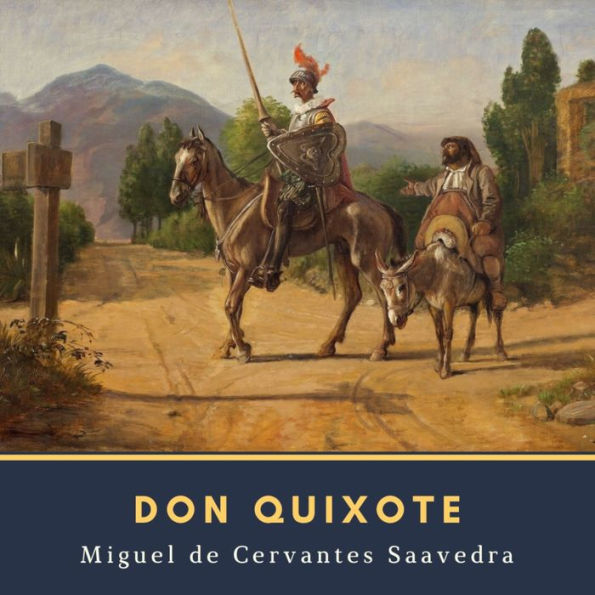Thomas Mann
What a monument is this book! How its creative genius, critical, free, and human, soars above its age!
Fyodor Dostoyevsky
A more profound and powerful work than this is not to be met with...The final and greatest utterance of the human mind.
Samuel Taylor Coleridge
The highest creation of genius has been achieved by Shakespeare and Cervantes, almost alone.
Publishers Weekly - Publisher's Weekly
As in Williams's Greek Myths for Young Children and Joseph and His Magnificent Coat of Many Colors , engagingly busy, ornately bordered, comic strip-style artwork gives new and buoyant life to a familiar story. The characteristic understatement of her text, juxtaposed with the humorous mutterings of a quirky cast (delivered in cartoon balloons), breezily chronicles Quixote's hapless quest to ``right all wrongs and protect all damsels.'' (Though Williams's rendition seems appropriate for the intended audience, literary purists may object on principle to the abridgement of such a venerable classic.) Here the would-be knight is rendered as quite the buffoon, as he prepares to tilt at windmills he mistakes for ``giants'' and battle two ``armies'' that are actually flocks of sheep. Time after time, Quixote and sidekick Sancho Panza are badly battered (the former is shown losing his ear and some teeth), but always brush themselves off and continue ``on their way in search of new adventure worthy of so famous a knight and his faithful squire.'' A fun way to become acquainted with this masterpiece. Ages 7-up. (Mar.)
Library Journal
In 2002, 100 major writers from 54 countries rated Don Quixote the world's best work of fiction. Any new translation of Cervantes's immortal classic is thus a major publishing event, and when that translator is Grossman-the prize-winning interpreter of such contemporary Latin American giants as Garc a Marquez and Vargas Llosa-it is a major event indeed. Grossman's goal was to make the 400-year-old book sound as if it were penned by one of her modern specialties. Using Martin de Riquer's scholarly edition, itself based on the princeps, she translates the text exactly, including the numerous gaps, such as the unexplained theft of Sancho's donkey. Grossman retains the original Latin, of course, but also such Spanish words as nsula that convey a particular meaning. She modifies the famous opening line of the novel by inserting the word somewhere before "in La Mancha," thereby reinforcing the vagueness of the location. Unlike earlier versions, this Don Quixote doesn't use the antiquated speech of the novels of chivalry that Cervantes is spoofing, thus providing a more readable text. Footnotes, many derived from de Riquer, are kept to a minimum and are included only when an explanation is indispensable; Grossman wants the novel to be read first and revered through the clogging of scholarly apparatus second. The end result of Grossman's two-year labor of love is a Don Quixote that is contemporary without being irreverent, a status Raffel's 1995 effort approached. The older, more faithful standard translations, like those of Putnam (1949), Starkie (1964), and Jarvis (revised 1992) will remain in the canon and in print, as much for their reliability as their quaintness. Where Grossman succeeds is in being faithful to Cervantes's comic spirit and natural style; it is indeed a sign of freshness and spontaneity that this reviewer laughed as if for the first time at passages that he's read many times before. As the literary world prepares for the quadricentennial in 2005 of the publication of Don Quixote's first part and in light of other competing versions, now and possibly to come by then, this is the one to beat. Recommended for all libraries. [Previewed in Prepub Alert, LJ 7/03.]-Lawrence Olszewski, OCLC Lib., Dublin, OH Copyright 2003 Reed Business Information.
School Library Journal
Gr 5 Up-- Cervantes's Don Quixote, the moniker and persona adopted by the addled Senor Quijada , who has read a few too many chivalric romances, hardly needs introduction to adults. However, most young people will have hardly heard him mentioned, much less had any firsthand contact with this larger-than-life literary creation. Bogin has taken some of the more involving, outrageous, and well-known adventures of the knight errant and his squire, Sancho Panza, and put them together into a relatively brief narrative that nonetheless is strikingly true to the tone and style of the Spanish original. Her prose, lively and at times employing modern vernacular to good effect, does full justice to Cervantes's mad Knight of the Sad Countenance. It begs reading aloud, and may well start discussion and contemplation. Boix's illustrations are delicate, detailed, gold-washed watercolors that create a kind of fairy-tale ambience. They will grab readers' attention and imaginations and direct anyone picking the book up to delve into it and to find out what's going on. Taken as a whole, this is a lovely job of bookmaking, providing an examplary introduction to a classic work. --Ann Welton, Thomas Academy, Kent, WA
From the Publisher
"[Harrison's] language captures the style of the original.... Ambrus's artwork is well suited to the story; he captures the personalities of both knight and squire without reducing them to caricatures."—School Library Journal
"A fast-paced, readable introduction to Cervantes' novel."—Booklist


